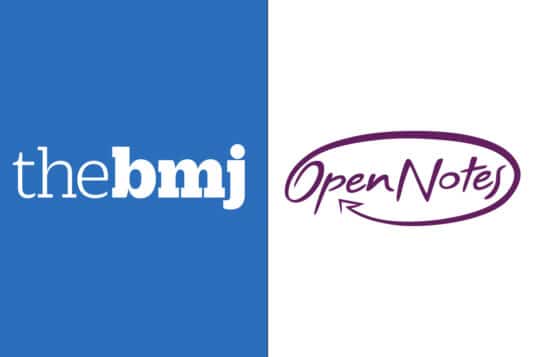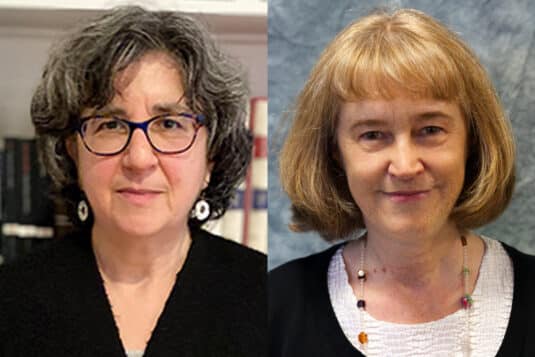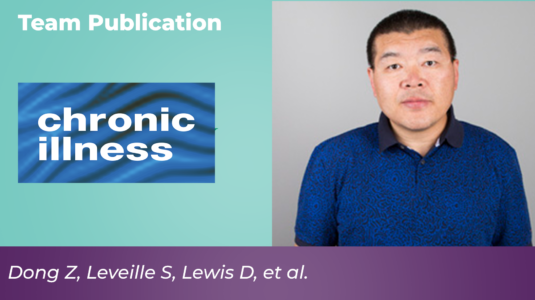In a recent BMJ opinion, OpenNotes leaders warn that a proposal by U.S. health secretary Robert F. Kennedy Jr. to eliminate public comment in federal health policymaking threatens transparency, public trust, and democratic values.
Walker, Jan
Study: Leveraging a patient portal to help patients formulate their healthcare goals
This study tested self-directed tools for older adults with chronic conditions to identify healthcare priorities. Website engagement was low, but 26% completed an Epic previsit questionnaire. Most found it helpful, and physicians noted it facilitated end-of-life care discussions.
People with diabetes who read their clinicians’ visit notes: Behaviors and attitudes
People with diabetes want to read their clinicians’ notes, are accessing them at high rates, and report understanding the notes and benefiting from reading them. Clinicians can encourage further engagement by enhancing the readability of notes and discussing the availability of notes with patients.
Patients Contributing to Visit Notes: Mixed Methods Evaluation of OurNotes
OurNotes interests patients, and providers experience it as a positive intervention. Participation by patients, care partners, clinicians, and electronic health record experts will facilitate further development.
Association of Patients Reading Clinical Notes With Perception of Medication Adherence Among Persons With Serious Mental Illness
Surveys show that clinicians worry that patients with mental health diagnoses will become anxious, confused, or upset after reading their visit notes. In this study, we examined how patients with a mental illness diagnosis who read at least 1 clinical note in the last 12 months perceived how reading the note affected their adherence to prescribed medication.
U.S. policy requires immediate release of records to patients: Patients and clinicians should embrace the opportunities
On 5 April a new federal rule will require US healthcare providers to give patients access to all the health information in their electronic medical records without charge. This new information sharing rule from the 21st Century Cures Act of 2016 mandates rapid, full access to test results, medication lists, referral information, and clinical notes in electronic formats, on request. The US is not alone in providing patients with full online access to their electronic health records. In Sweden, patients gained access to their records between 2012 and 2018. Estonian citizens have had full access since 2005. The sharing of personal health information isn’t without precedent in the US: around 55 million people already have access to their online clinical notes, and many more have access to laboratory results and other parts of their records. But for some US clinicians, the new rule may feel like a shock.
Words Matter: What Do Patients Find Judgmental or Offensive in Outpatient Notes?
One in 10 respondents reported feeling judged/offended by something they read in an outpatient note due to the perception that it contained errors, surprises, labeling, or evidence of disrespect. The content and tone may be particularly important to patients in poor health. Enhanced clinician awareness of the patient perspective may promote an improved medical lexicon, reduce the transmission of bias to other clinicians, and reinforce healing relationships.
Sharing Clinical Notes in Psychotherapy: A New Tool to Strengthen Patient Autonomy
Against the current shortcomings with disclosure practices in psychotherapy, healthcare is becoming more transparent and “open notes” —inviting patients to read their clinical notes via online portals—is a growing movement. Numerous health institutions in over a dozen countries have begun to share the health records with patients (5). In the USA, from November 2020, new federal rules mandate, with few exceptions, the sharing of medical notes; psychotherapy notes remain exempt from this ruling (6). Although fewer health organizations have chosen to share mental health notes (7), all patients have the right to understand their care (8). While many clinicians anticipate workflow problems from sharing notes (9, 10), studies suggest that clinicians do not experience major burdens to documentation practices (11–13).
Addressing the perceived challenges with informed consent processes in psychotherapy contexts, we propose that open notes may provide an important new strategy to strengthen patient autonomy and improve clinical outcomes without sacrificing professional autonomy.
Validation of a brief scale to assess ambulatory patients’ perceptions of reading visit notes: a scale development study
Four studies were used to evaluate the construct validity of a benefits and risks scale. Study 1 refined the items; study 2 evaluated underlying factor structure and identified the items; study 3 evaluated study 2 results in a separate sample; and study 4 examined factorial invariance of the developed scale across educational subsamples.
The findings suggest that the four-item benefits scale has excellent construct validity and preliminary evidence of generalising across different patient populations. Further scale development is needed to understand perceived risks of reading open notes.
New U.S. Law Mandates Access to Clinical Notes: Implications for Patients and Clinicians
On 2 November 2020, new federal rules will implement the bipartisan 21st Century Cures Act that, in part, “. . . promotes patient access to their electronic health information, supports provider needs, advances innovation, and addresses industry-wide information blocking practices” (1). The rules forbid health care organizations, information technology vendors, and others from restricting patients’ access to their electronic health care data, or “information blocking” (Table). Although the Health Insurance Portability and Accountability Act gave patients the legal right to review their medical records, the new ruling goes further by giving them the right to access their electronic health records rapidly and conveniently . . .






